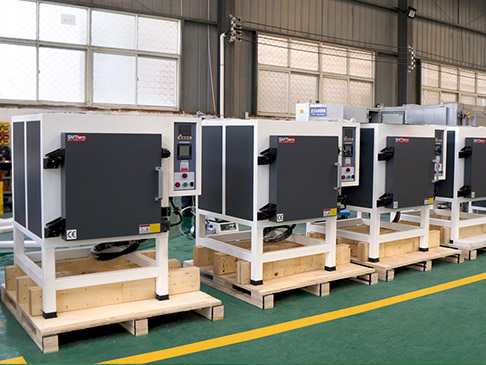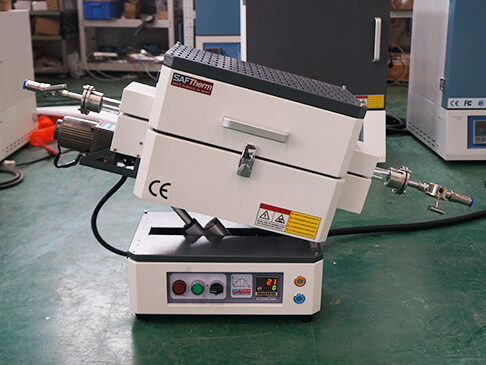
Benefits of Horizontal Tube Furnaces
Now that we have recapped the basics, let us look at the main benefits of horizontal tube furnaces and how they enable leading-edge performance in specific application areas.

The box annealing furnace has two annealing chambers and two preheating chambers. Eight burners are arranged tangentially in the annealing chamber, so that the combustion gas flows around the annealing chamber. The combustion gas is discharged at the upper edge of the annealing chamber, and then flows through the preheating chamber from top to bottom. Then use a fan to blow part of the combustion gas into the annealing chamber again, and the other part into the chimney. This cyclic heating method can avoid local overheating of the annealing box. During the annealing process, the protective gas circulates in the annealing chamber.

The annealing furnace is a medium industrial furnace with long strip shape. The continuous bright annealing furnace of axle in forging and metallurgy workshop of vehicle factory originally used fuel oil sub high speed burner, which is mainly used for heat treatment of train axle after heating and casting. It is one of the most important equipment in forging and metallurgy workshop of vehicle factory.

Working Principle of Annealing Furnaces
Annealing is a heat treatment process that is used to alter the chemical or physical properties of a metal to make it more ductile and reduce its hardness.
An annealing furnace works by heating an annealing furnace above its recrystallization temperature and then cooling once the sample has been maintained at this temperature for a suitable amount of time.

Box Furnace Temperature Guide
Saftherm of lab furnaces offers three main types of box furnaces in different temperature ranges. The following box furnace temperature guide provides details on each of the three box furnace ranges.

What is a Rotary Tube Furnace?By definition, a rotary tube furnace is a heat-treating circular furnace, which rotates during heat-treatment. Samples are transported through the furnace in a circular path as they are heated.

Use Of Muffle Furnace Industrial
Muffle furnace is an oven type testing instruments which can reach high temperatures. The furnace achieves the high-temperature on the basis of the insulating material which is fitted inside the chamber. The insulating material which is provided in the chambers acts as a muffle and stops the heat from escaping out of the chamber. Muffle furnaces are used for the applications where there is huge demand of testing the sample at high temperature and to determine the percent of ash content in those materials. The industries in which the furnaces are used for treating the samples at high-temperature

Dental Laboratory furnaceFor Dental laboratory furnace applications, you need the best in custom furnace design. Across International dental furnaces come in a variety of configurations for your specific requirements. Several elements of Ai Muffle furnaces are customizable, including:

Features of our muffle and sintering furnaces include1.Alloy muffles designed for temperatures up to 1,800°F2.Indirect heat supplied by electric glow bars surrounding the outside of the muffle3.Controlled heat up and cool down rates4.Stainless steel or ceramic slide beds5.Mesh belts6.Inert gas atmospheres and supporting equipment
Submit Request